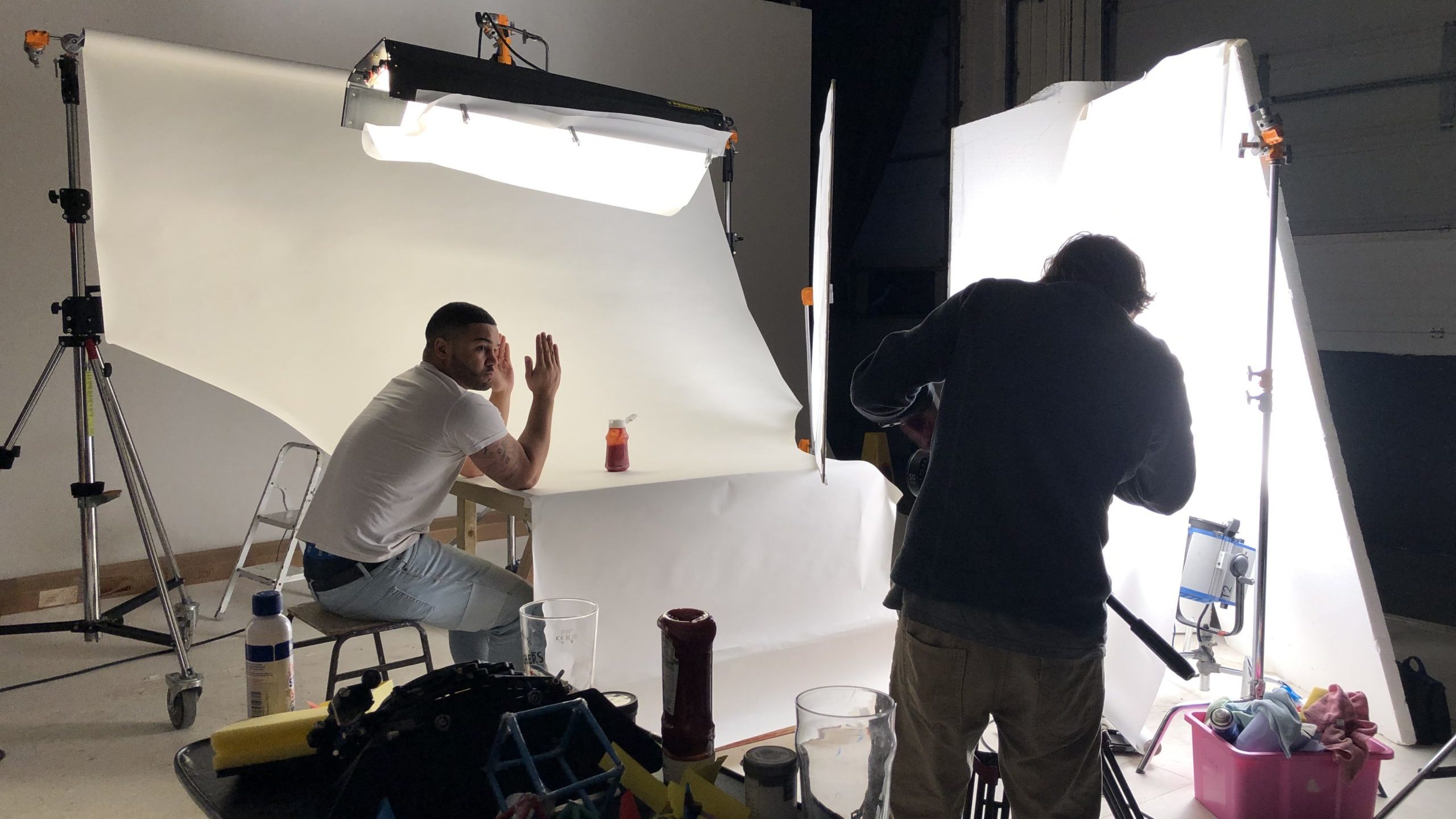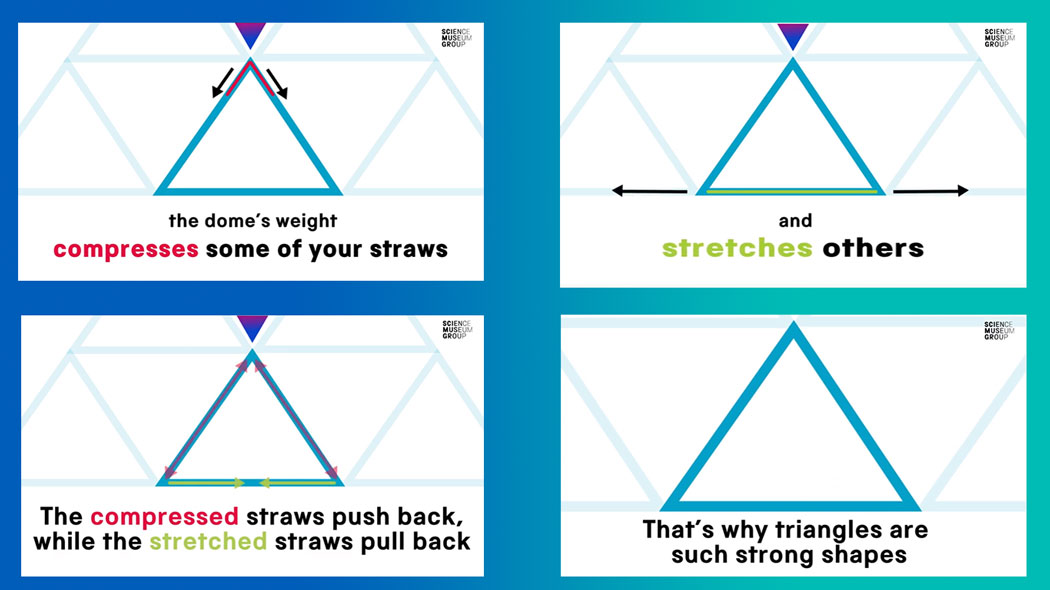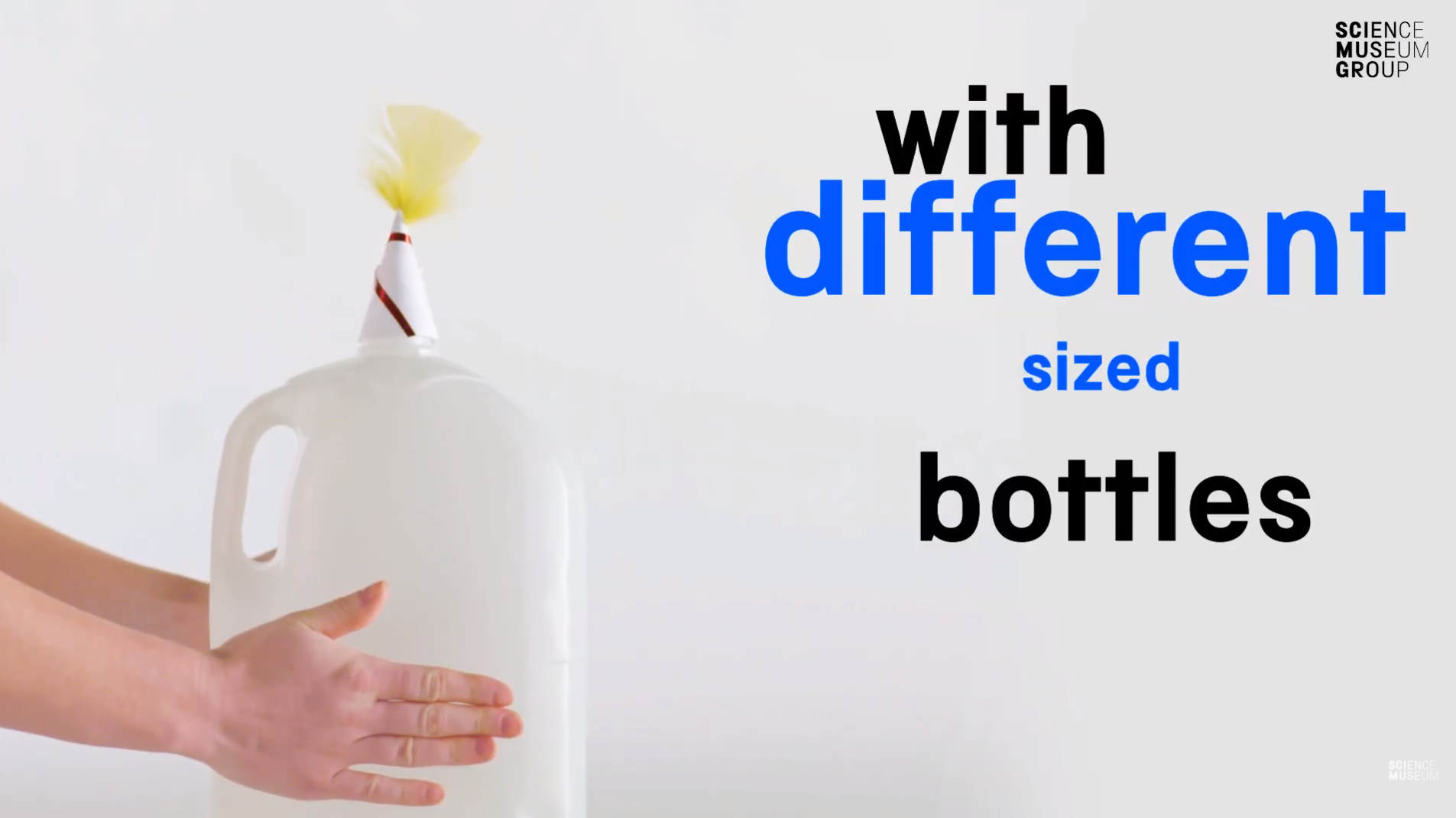In my first post, Creating videos of our hands-on resources, I shared links to the currently developed videos and discussed the reasons we decided to make them. This post is all about the development process. But first, here’s our latest hands-on activity video, Make It Fly:
A lot of how-to videos show how to do something and… that’s it. There’s often no extra information to continue the experience beyond the activity. For us, it was really important that anyone who watches our videos feels:
- Inspired to go away and try the activity
- Like they can confidently talk about the questions and themes posed in the video
- Generally a bit more empowered when it comes to science and maths
To help us achieve these outcomes, we used our engagement reflection points. Here are just some examples of how we interpreted them to make our hands-on activities really come to life on video.
Confidence and ownership
Like the PDFs, the videos are colourful, fun and light-hearted. The videos show a real person doing each activity, which helps to hook people in and shows them exactly how to do it, and how easy they are to make. We hope that this empowers people to try the activities themselves by giving them the confidence that they can do it too. Each video starts by clearly showing what equipment is needed, all of which is easily accessible. If viewers already have everything they need lying around the house, that’s the first barrier to getting started removed straight away.
Everyday Examples
We have been careful to connect each activity with everyday examples like bridges, squeezing a bottle of ketchup or playing football, in our ‘Did You Know?’ sections. By doing this we want to help people link STEM (science, technology, engineering, and maths) to their rich and diverse interests and experiences. We know this can really help build people’s science capital.

Language
While a lot of people enjoy our resources in their original PDF format, we know video works better for others, e.g. visual learners. When we started making the videos, we knew that to make them as accessible as possible the length and complexity of the information shared in our PDF resources had to be condensed. Shorter, simpler statements and visuals make the video versions easily digestible by both adults and children, regardless of whether or not English is their first language.
We found that taking difficult concepts and boiling them down to the absolute essence was easier with some videos than others. Build a Dome was particularly challenging; it is a complex activity, underpinned by fairly sophisticated engineering principles. Eventually we opted for a combination of simple wording and animation.

Promoting Science Talk
Each video contains a question for viewers to ponder. In Build a Dome for example we ask, ‘Why doesn’t your dome fall down?’. This is our way of promoting science talk and encouraging discussion, particularly among a group of people. We know that this type of activity helps families feel more confident about science.
Extending the experience
There is also a ‘Now Try This’ section, designed to extend the experience and perhaps demystify it a little. We hope this helps to build confidence in not only directly following instructions but experimenting a little further, using science skills like creativity and problem solving. We want active participation instead of passive viewership.

As a whole package, we hope these videos can help our audiences feel that science and maths are for them, to recognise where STEM relates to their everyday lives and to start discussing STEM with their friends and family. We hope that by being shown that it doesn’t take much to get started, people will try experimenting themselves, using their STEM skills such as problem solving and creativity, and will see how much fun can be had!
